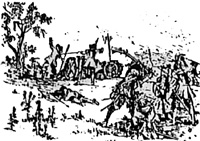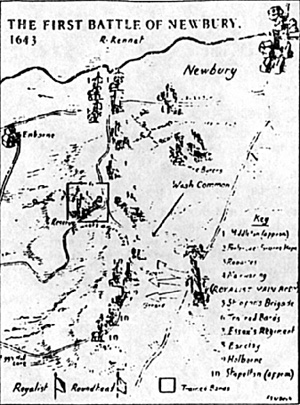 For various reasons that may become clear I have decided to break with editorial tradition and write this review myself. Before progressing I feel I should point out that I write this as a Publisher, Bookseller, Civil War enthusiast and, not the least, someone who had a chatting acquaintance with Wilf Emberton. Earlier this year, and only a few weeks before the long awaited publication of SKIPPON'S BRAVE BOYS, Wilf passed on. After many years of attempting to get this published, initially by subscription on his own, it is tragic that, in addition to his loss, he never saw the final fruits of his labour.
For various reasons that may become clear I have decided to break with editorial tradition and write this review myself. Before progressing I feel I should point out that I write this as a Publisher, Bookseller, Civil War enthusiast and, not the least, someone who had a chatting acquaintance with Wilf Emberton. Earlier this year, and only a few weeks before the long awaited publication of SKIPPON'S BRAVE BOYS, Wilf passed on. After many years of attempting to get this published, initially by subscription on his own, it is tragic that, in addition to his loss, he never saw the final fruits of his labour.
The book comprises 136 pages of text and illustrations, dealing primarily with the London trained Bands during the Civil War, but also with their history. Many of the major battles during the War are also analysed due to the Trained Band's participation in so many important actions. That's what it's about, but what's it like? It is printed and bound in large format but longways, an unusual format for Adult, historical publishing. The text is in Wilf's usual flowing and readable style, and overall is a delight to read. It is therefore unfortunate that there are several inaccuracies in the book, some editorial, some factual. Before going into these it is important to realise that the Manuscript Barracuda Mss has been sitting awaiting sufficient subscribers at the publishers. Also that there has been a large surge in detailed research on teh London Trained Bands, most recently by Keith Roberts.
One of the more noticeable errors concerns the colours on page 37. They are all wrong. Basically they are all one step in seniority too high. ie. 3rd Captain, Red Regiment should be 2nd cpt, Red Regiment. Probably due to the fact that the normal Civil War system ran 1 symbol- 1 Captain but the Trained bands counted the first Symbol as the major. The source Wilf quotes, Dillon's article, gives the correct captions which leave me to wonder whether another source was used or it was not picked up at the editorial stage.
The assumption throughout is that there were 15 regiments of Foot and one of Horse. In fact there were 18 of Foot and 3 of horse. This is based on the inaccurate 1643 list quoted. Again, this information has only just come to light.
It is also dated by the pikeman drawn wearing boots and what appears to be a rank stripe- Both relics of the older days of the Sealed Knot, an organisation in which Wilf was heavily involved.
There are other details, such as claiming the regiments wore the same colour coats as that of the flags. The idea is based on Essex' army, which itself did not entirely stick to this format; the confusion over the various auxiliaries, stemming mainly from the mention of these extra 3 regiments in contemporary sources but not in the lists used. They are all a result of the delay in publication of the manuscript.
Reviewing for a magazine that likes to debate the very very fine points of the Civil War it is easy to pick out the minor faults. Overall it is truly an excellent account for the general reader and useful for the enthusiast. Stephen Beck's well known illustrations are much in evidence. I feel the publishers have done him a disservice by expanding his nice vignettes to full page pictures, losing some of their charm and value on the way, but this is more than compensated for by the lucid style of his battle maps.
One has to accept that, with historical research, absolute accuracy is merely fleeting, I hope that people will prove me wrong. I recommend this book to anyone with any interest in the War, though I trust that many of you helped with its publication by subscribing.

Back to English Civil War Notes&Queries No. 3 Table of Contents
Back to English Civil War Times List of Issues
Back to Master Magazine List
© Copyright 1984 by Partizan Press
This article appears in MagWeb (Magazine Web) on the Internet World Wide Web.
Other military history articles and gaming articles are available at http://www.magweb.com